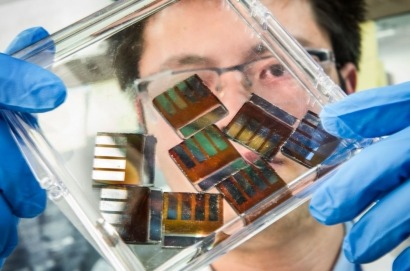
Perovskite is based on the same structure as a mineral named after Russian mineralogist Lev Perovski. Initial research into its use went nowhere as its structure was poorly understood and the industry had already settled on silicon as its material of choice.
Then, in 2009, a research paper published in The Journal of the American Chemical Society by a group led by Tsutomu Miyasaka, a professor at Toin University of Yokohama, drew new attention to the potential uses of the material.
The big breakthrough for perovskite came in 2012 when the material’s conversion efficiency--the portion of sunlight that can be converted into electricity--rose above 10% for the first time. To date, its efficiency in the lab has exceeded 20% and is still increasing.
Bloomberg reports that the advances have raised the possibility that perovskite cells could one day be placed on top of cars, windows, and walls. Oxford Photovoltaics Ltd., a spin-off from the University of Oxford, says it’s developing thin-film perovskite solar cells able to be printed directly onto silicon solar cells.
There are challenges which need to be overcome before perovskite is ready for the marketplace. Researchers need to devise a way to ensure the material remains stable over long periods. They also need to develop an efficient means of applying the material to large surfaces.
However, proponents of perovskite believe it could play a crucial role in the expansion of solar energy applications with cells as efficient as those currently made with silicon.
For additional information:

